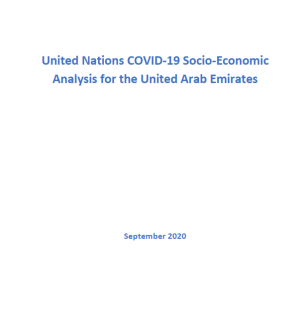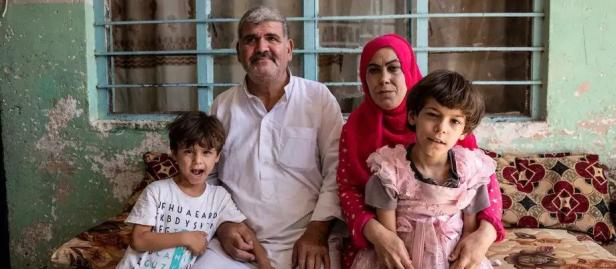United Nations COVID-19 Socio-Economic Analysis for the United Arab Emirates

United Nations COVID-19 Socio-Economic Analysis for the United Arab Emirates
November 2, 2020
The COVID-19 pandemic has impacted people’s lives in every corner of the globe in an unexpected and unprecedented manner, affecting billions regardless of privilege and wealth, social and legal status, religion, culture, customs, ability, nationality, sex, and age. The United Arab Emirates (UAE), known for its thriving economy and vibrant metropolis, is no exception.
The UAE is a high-income country and has the second largest economy in the Arab region with a GDP of USD 402.8 billion. The country has been struggling to fully recover following the 2009 financial crisis, with several sectors experiencing headwinds particularly in the last five years. GDP growth has declined from 4.4 per cent in 2012 to 3 per cent in 2016, and 1.6 per cent in 20192. Oil prices have fallen, on average, from USD93 per barrel in 2014 to USD57 in 20193 and even lower in 2020, while UAE production levels remained largely consistent. Furthermore, real estate over supply, regional geopolitical tensions in the Gulf, and global trade disputes and subsequent decline in cargo volumes had all affected the UAE’s economic prospects prior to arrival of the COVID-19 pandemic.
Nonetheless, the UAE maintains its appeal regionally and globally as an economic hub, having already attracted almost 8.6 million international migrants, recognized as temporary contractual workers, who represent with their dependents 87.9 per cent of the UAE population. The majority of migrants are men (76 per cent) between 20 and 50 years old, mainly from Asian countries such as India (40 per cent), Bangladesh (13 per cent)4, and Pakistan (11 per cent). As a result of this economic migration, the UAE is the world’s second largest source of remittances after the United States, with USD44.3 billion outgoing remittances in 20185.
Worldwide, the impact of COVID-19 has been most felt by most vulnerable segments of society and in different ways as a result of inherent dispositions, direct exposure to the health, economic, and social consequences of the pandemic, or other reasons. In the context of the UAE, vulnerable segments can include women who are most susceptible to domestic violence, children, adolescents, and youth who lost access to group-based educational and recreational activities, migrant workers who lost their livelihoods as well as dependant families who lost remittances, and persons with existing medical conditions and in need of healthcare resources diverted to contain the pandemic, among others.

 Locations
Locations



